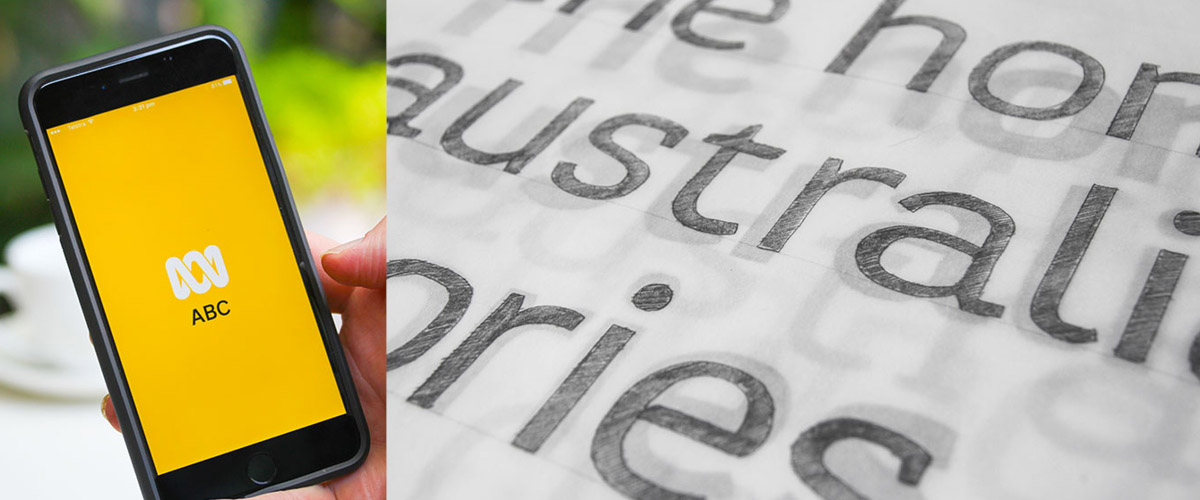What The Font – Part 2
What is a font licence?
In the best analogy I’ve heard to date, Wayne explained it to me like this: “It’s like an electricity contract or health insurance: it’s complex and confusing and, because there’s no real policing of the issue, most people don’t bother. It’s an area where designers really need more education.”
The general consensus with designers is the awareness that font licences exist, however there is limited understanding of all the jargon outlined within the licence agreement.
Wayne further outlined what he perceived to be the design communities overall approach to font usage: “In my experience, most commercial designers are deeply ignorant of where their fonts come from, and whether they are using them legally or not.” Clearly this doesn’t cover all graphic artists and agencies approach to font usage, but the majority play ignorant to the rules.
The waters still look to be murky, but at least we have established why; designers are often misinformed, careless with their font management, have improper usage practices and are often ignorant to the repercussions of unwarranted usage. As designers and marketing agencies we are required to know what happens if a font licence isn’t respectfully purchased and honoured.
Who owns a custom typeface?
When a font is designed for a client the rights and usage of that typeface are owned outright by that company (the client). This agreement is established between the typographer and the client, normally outlining that nobody outside of that company can use their font in its perpetuity.
Wayne informed me that when he creates a font, he embeds some licensing code into the font, and therefore wherever the font ends up it always has the licence details with it. Other than that, the typographer has no further control over the font, so it can be leaked into the public domain and potentially used against the creator’s wishes. This was the scenario that landed HADOPI in hot water.
Wayne designed the ABCSans font for ABC Australia and says that a handful of people have asked if the font is publicly available? The common argument being, “we pay taxes, so we should be entitled to use the ABCSans font.” Valid point right?
Wayne further pointed out something that again agitates the muddy waters. He said, “My understanding is that, under Australian law, copyright remains with the creator…” It is logical when you think about it – A typographer creates a font, therefore they hold the copyright for their creation.
Wayne closes with, “I sell my clients an exclusive license to USE the fonts, but they can NOT ever OWN them”.
Where are bad habits formed?
After all this in-depth research I still find the waters are muddy, however there is a clear point that has been made; if you don’t own the licence to a font, you should not be using it. Period!
Well that’s a bit harsh, because students can often get away with using fonts without a licence when creating design projects for assignments as these are not intended as commercial works. However it’s this relaxed approach to design where the bad habits begin!
Students have little to no money, university and college lecturers don’t specifically educate design students about proper legal usage of typefaces (definitely not in full detail), and the common school of thought amongst digital natives is that the internet should be ‘FREE’!
However, students graduate and become graphic designers in marketing agencies and studios, where they take all their bad habits along with them and apply them in the real world.
Wayne, provided an example of these so called bad habits. He picked up on a breach of the rules when assessing a project he had assigned to his typography students. Wayne had given his class of 95 students a project where they had to create their own custom typeface. He noticed that 2 of the students had attempted to plagiarise an existing font, rather than design their own!
As a professional typographer Wayne takes the topic of typeface copyright law seriously. He makes an effort to educate his students of the legal obligations that they have as designers. In the case where he pinpointed the plagiarism by his two students, Wayne called on these students to explain their actions, and then re-do the assignment properly or they would receive a failed grade.
Let’s begin doing things properly
When you purchase a commercial font you obtain the rights to use that font as you wish in both commercial and personal (non-commercial) applications.
Some fonts come with a single user licence and in some cases they come with a 1-5 licence. A single user licence can only be installed and used on one machine, whilst a 1-5 can be used on multiple machines, but no more than 5. If you wish to install the font on more than 5 machines another instance of the licence will need to be purchased so that you abide by font license agreement.
Just because you have purchased the font, it doesn’t mean that you can share it around the whole office, handing it onto other associates and so forth. Doing this is considered a breach of the legal agreement outlined in the font license.
PRO TIP: One work around for sharing artwork from designer to client would be for the designer to convert the typeface to outlines and then supply the artwork as vector text. This ensures that the client or other users of the artwork documentation will not require the font(s) used when displaying the text.
Font licensing scenarios encountered by Designers
Scenario 01 – Designer buys font for Client project
If you design a logo for a client and use a font they wish to use for their logo, then YOU should purchase that font and assign the license in THEIR name. However this means that after you complete the logo project you cannot and should not use that typeface for any other projects outside of work for that particular client.
The client owns the font license and therefore can use the font for internal and external work. With that font license the client is allowed to use the logo as their brand identity.
Scenario 02 – Designer buys font for Client, but wants to use that font on other design projects
If you design a logo for a client and plan to use the typeface in future commercial design projects of your own, then; you will need to purchase the license in YOUR name.
If the font is later used on a new client’s logo or design material, then they will too have to purchase a font license in THEIR name.
NOTE: Buying a font once does not give you free reign to use that typeface for other clients into the distant future. Each and every time a commercial font is used in a design for a client, where that artwork will be used in a commercial sense by someone other than you (the font license owner) then you need to assess how the licence applies. Most likely that client will need to purchase a license to keep them in the clear.
Free Fonts! Are they actually free?
When you download a free font, be sure to always check the licensing which the font creator has assigned to that typeface. Even though it may be a free font for download, it may still have licensing assigned to it!
For example you may have free reign to use that font privately in student projects, or for personal usage, however if you wish to use it in a commercial sense, there may very well be restrictions!
Often permission must be granted by the font designer themselves, and this can often be done by sending the type designer an email politely requesting use of his or her typeface in commercial work.
Otherwise the text file (user agreement) supplied with the font may state that a license will need to be purchased from the font creator if you intend to use their typeface for commercial work.
Again make sure you read the fine print! Don’t assume anything.
PRO-TIP: Get into the habit of clearly archiving your fonts on a computer hard drive or server. Always save fonts with their licence agreement in folders that reflect the typeface family name. Also consider using a font management application to organise and activate only the fonts you require per job. Failure to do this can slow down a work machine as too many fonts can be a drain on the CPU.
Web Fonts – The new kids on the block!
In the past few years a new service has arrived in the form of web fonts. Put simply you do not download the font file itself, instead you enable a typeface from a font server, and that cloud based system connects that font to your work machine when you are logged in. It can also link fonts to your websites that you have created, which is why websites in recent years have started to display a greater array of attractive, well-designed typography.
There are a number of web font font services available today, however the two key leading services are Adobe TypeKit or Google Fonts. Every web font service available has specific licensing agreements, so designers and clients need to be aware of the legal requirements when using fonts for commercial applications.
With Adobe TypeKit there are two types of fonts available to users; Web fonts & Sync fonts.
Web fonts are available for web developers to embed a link to the cloud based font service, so that when users view a website on PC, tablet or mobile device the TypeKit font is linked and displayed. The advantage of this is that websites today can have a greater variety of professionally designed fonts to display text, when in the past the fonts available were limited.
Sync fonts allow you to synchronise fonts from the TypeKit cloud server and use the synced fonts in you Adobe Creative suite software or even your Microsoft Office suite. The plus with this service is that synced fonts can be used in commercial design work, including copyright / registered Trademark logo design. For more detailed info on TypeKit font licensing click here.
Have we found clarification?
If you were approached by a new client from large firm, and you were asked to re-design their logo with the brief focused on a strongly typographic based logo, how would you now approach this branding exercise?
My approach would be to begin with the initial consultation of the client, firstly to inform them of the legal obligations we both have as designer & client when using a typeface in its entirety, before we proceed with the branding process.
Once the client has approved the typeface they want to use for their branding I would suggest having them purchase the font and assign the license to their own name. This would ensure that both the designer and the agency properly protected when using the purchased typefaces for their work only.
In the real world, fonts will always be used in both personal and commercial applications against the legal outlines stated by the font creator. Clearly the policing of font usage isn’t something that really exists!
What usually happens is when a large commercial entity uses a font illegally, it is often noted by typographer who created the original typeface. In most cases the designer or company at fault is instructed to purchase the font license and are occasionally charged for back dated usage fees. “Rarely if ever do these cases end up in court, mostly the company receives a letter of demand from a solicitor and a financial settlement takes place”, says Wayne.
Wayne continues to explain, “For freelancers and small studios, mostly font licensing is not policed much because their work is not as high-profile and because there’s less money involved. Why spend a solicitor’s time and costs to retrieve font licensing for 2-5 users which is a couple hundred dollars? So there’s an economic factor which allows small players to remain unscrutinised.”
It’s common for designers and users in general to disregard or turn a blind eye to legal font usage. However in our quest to be professional graphic designers and marketing agencies we should better educate ourselves (including our clients) and take a more formal approach to design when working with fonts in commercial projects.
Don’t simply assume a font is free to use – remember a free font does not mean that it’s free! Always read a fonts license agreement, purchase fonts when you see it necessary and maintain a tidy font library and license archive. Now go be creative!
Article by Paul Dubczuk


